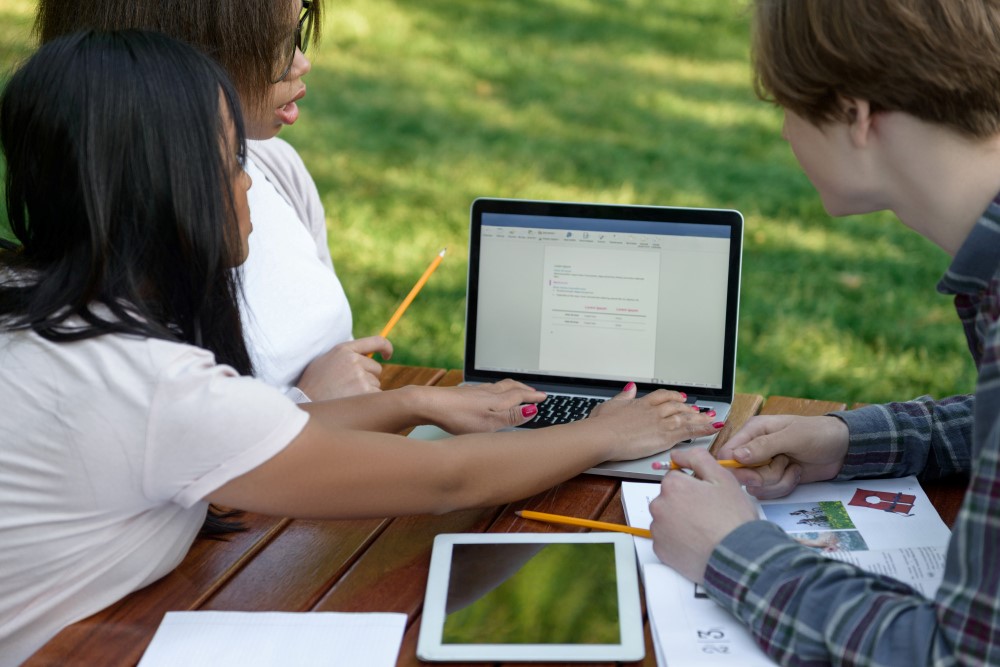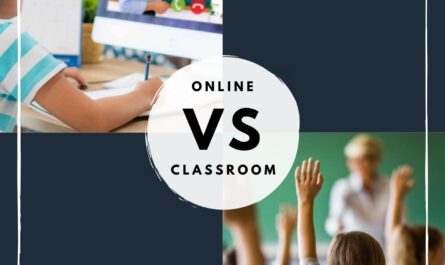The world of education has experienced a significant shift towards online learning in recent times, driven by technological advancements and the COVID-19 pandemic. While online learning has numerous benefits, including accessibility and flexibility, it can pose significant challenges, particularly in keeping students engaged. Engaging students in an online learning environment is crucial to ensure that they stay motivated and achieve their learning goals. Therefore, educators need to adopt innovative strategies to keep students engaged and ensure that they derive the maximum benefit from online learning. In this article, we will discuss some of the most effective strategies that educators can use to engage their students in online learning environments.
In today’s world, online learning is becoming increasingly popular, especially in the wake of the COVID-19 pandemic. While online learning has several benefits, including convenience and accessibility, it can also pose some challenges, such as keeping students engaged. Therefore, educators need to adopt innovative strategies to engage students in online learning environments.
In this article, we will discuss some of the most effective strategies that educators can use to engage their students in online learning.
Use Interactive Learning Tools
Interactive learning tools are digital resources that allow students to actively participate in the learning process by engaging with the content in a more dynamic and engaging way. These tools can take many forms, including games, simulations, videos, interactive quizzes, and virtual labs.
Using interactive learning tools is an effective strategy for engaging students in online learning environments as it creates an immersive and interactive experience that helps them understand the subject matter better. Interactive tools allow students to explore and experiment with different concepts, apply critical thinking skills, and engage in problem-solving activities.
Furthermore, interactive learning tools provide immediate feedback to students, which helps them gauge their understanding of the subject matter and identify areas where they need to improve. This feedback is essential for students to stay motivated and engaged in the learning process.
Educators can leverage a variety of interactive learning tools to create an engaging online learning experience. For example, they can use games and simulations to teach complex concepts, such as economics or physics. They can also use videos and virtual tours to take students on a virtual field trip, providing a hands-on learning experience.
In conclusion, the use of interactive learning tools is an effective strategy for engaging students in online learning environments. These tools create an immersive and interactive experience that helps students learn better, retain information longer, and stay motivated throughout the learning process
One example of using interactive learning tools to engage students in online learning environments is to incorporate teacher email lists. Teachers can use email lists to send interactive learning tools directly to their students, such as quizzes, polls, and surveys. By using these interactive tools, students can engage with the course material and receive immediate feedback on their performance.
For instance, a teacher can create a quiz using an interactive learning tool like Kahoot or Quizlet, and then send it out to their students via email. Students can then complete the quiz on their own time and receive immediate feedback on their performance.
This approach not only helps students learn the course material but also promotes active participation and engagement.
Additionally, teachers can use email lists to provide students with links to online resources, such as educational videos, articles, and podcasts. These resources can be used to supplement course materials and provide students with additional opportunities to engage with the subject matter.
By using interactive learning tools like quizzes and providing students with links to online resources, teachers can create a more engaging and interactive online learning environment. This approach not only helps students learn the course material but also promotes active participation and engagement.
Encourage Active Participation
Encouraging active participation is a crucial strategy for engaging students in online learning environments. Active participation refers to the involvement of students in the learning process by interacting with the course materials, their peers, and the instructor. Active participation is essential for students to stay engaged and motivated in online learning environments.
There are several ways educators can encourage active participation among their students. One way is to create an interactive learning environment that encourages students to engage in discussions, ask questions, and provide feedback. This can be achieved through various means, such as online discussion forums, video conferencing, or collaborative projects.
Another effective strategy is to provide students with opportunities to collaborate with their peers. Group projects, peer reviews, and team assignments are great ways to encourage active participation and promote teamwork skills.
Moreover, educators can use various active learning techniques, such as problem-based learning, case studies, and simulations, to promote engagement among students. These techniques provide students with the opportunity to apply their learning in real-world situations, fostering critical thinking and problem-solving skills
By encouraging active participation, educators can help students become more invested in their learning experience, leading to better learning outcomes. It also helps create a sense of community among students, which can be especially beneficial in an online learning environment where students may feel isolated.
In conclusion, active participation is a crucial component of engaging students in online learning environments. Educators can foster active participation by creating an interactive learning environment, encouraging collaboration, and using active learning techniques. By doing so, students are more likely to stay engaged, motivated, and invested in their learning experience
Provide Frequent Feedback
Providing frequent feedback is a crucial strategy for engaging students in online learning environments. Feedback is information provided to students about their performance, progress, and understanding of the course materials. In an online learning environment, feedback is especially
important as it can be challenging for students to gauge their understanding of the course materials without face-to-face interactions with their instructors.
Frequent feedback can take many forms, such as written comments, audio or video recordings, or online quizzes. The feedback should be timely and specific, highlighting the areas where students are excelling and providing constructive criticism on areas where they need improvement.
One unique approach to providing feedback is the use of peer feedback. Peer feedback involves students providing feedback to each other on their assignments, presentations, or projects. This approach not only relieves some of the workloads on instructors but also encourages active participation among students and helps build a sense of community among peers.
Furthermore, personalized feedback can be an effective way to engage students in online learning environments. Personalized feedback takes into account each student’s individual learning needs and provides tailored feedback that helps them improve their understanding of the course materials. This approach can be achieved by using adaptive learning technologies that provide students with customized learning pathways based on their performance.
In conclusion, providing frequent feedback is a critical strategy for engaging students in online learning environments. Educators can provide feedback in various forms, including peer feedback, personalized feedback, and timely feedback that highlights areas of improvement. By doing so, students are more likely to stay engaged, motivated, and invested in their learning experience.

Use Gamification Techniques
Gamification techniques involve incorporating game-like elements into non-game contexts, such as online learning environments. These elements can include rewards, badges, levels, leaderboards, and other game-like mechanics that incentivize students to engage with the course materials and complete learning activities.
Using gamification techniques in online learning environments is a unique and effective strategy for engaging students. It can help increase student motivation, participation, and retention. By using gamification, educators can transform learning into a more interactive and enjoyable experience for students, making it more likely for them to continue learning and succeed in their courses.
One unique gamification technique is the use of storylines. Storylines involve creating a narrative that is integrated into the course materials, creating a sense of progression and purpose for students. This approach can be especially effective in keeping students engaged and motivated throughout the course.
Another unique gamification technique is the use of quests or missions. Quests involve setting up a series of learning activities that students must complete to progress to the next level. As students complete each activity, they earn points or badges, which help track their progress and incentivize them to continue learning.
Additionally, educators can use social gamification techniques to engage students. This involves creating a community around the learning experience, and encouraging students to compete with each other or collaborate on tasks. Leader boards, badges, and other rewards can be used to recognize top-performing students and incentivize healthy competition.
In conclusion, gamification techniques can be an effective and unique strategy for engaging students in online learning environments. Educators can use storylines, quests, and social gamification to create a more interactive and enjoyable learning experience that motivates students to continue learning and succeed in their courses.
Create a Collaborative Learning Environment
Creating a collaborative learning environment is a crucial strategy for engaging students in online learning environments. Collaboration involves working together with peers to achieve a common goal or complete a learning activity. By collaborating with others, students can build social connections, develop teamwork skills, and enhance their understanding of course materials.
One unique approach to creating a collaborative learning environment is through the use of online breakout rooms. Breakout rooms provide students with the opportunity to work together in small groups to discuss course materials, complete assignments, or solve problems. This approach helps students build relationships with their peers, foster teamwork skills, and gain a deeper understanding of the course materials.
Another unique approach is to use peer mentoring. Peer mentoring involves assigning more experienced students to work with less experienced students to provide guidance, support, and feedback. This approach not only helps students build relationships but also fosters a sense of community and promotes active participation.
Personalize Learning Experience
Personalizing the learning experience is an effective strategy for engaging students in online learning environments. Personalization involves tailoring the learning experience to meet the individual needs and preferences of each student. By personalizing the learning experience, educators can help students feel more engaged, motivated, and invested in their learning.
One unique approach to personalizing the learning experience is to use adaptive learning technologies. Adaptive learning technologies use algorithms to personalize the learning experience based on the individual student’s learning preferences, progress, and performance. This approach can help students learn at their own pace, focus on areas where they need improvement, and receive personalized feedback and support.
Another unique approach is to provide students with a choice of learning activities or assignments. This approach allows students to select the learning activities or assignments that best match their interests and learning preferences, making the learning experience more engaging and relevant.
Moreover, educators can personalize the learning experience by using learning analytics to track and analyze student performance data. Learning analytics can help educators identify patterns in student learning behavior and use this information to personalize the learning experience, such as providing additional support in areas where students are struggling or offering challenges to students who are excelling.
Finally, educators can personalize the learning experience by providing opportunities for students to pursue their own interests or passions. This approach can involve offering students independent study projects or allowing them to choose their own research topics. By allowing students to pursue their own interests, educators can help them feel more invested and engaged in their learning.
Conclusion
Engaging students in online learning environments can be challenging, but with the right strategies, it can be an enjoyable and effective learning experience. Educators need to adopt innovative strategies such as using interactive learning tools, encouraging active participation, providing frequent feedback, using gamification techniques, creating a collaborative learning environment, and personalizing the learning experience to engage students in online learning effectively.



